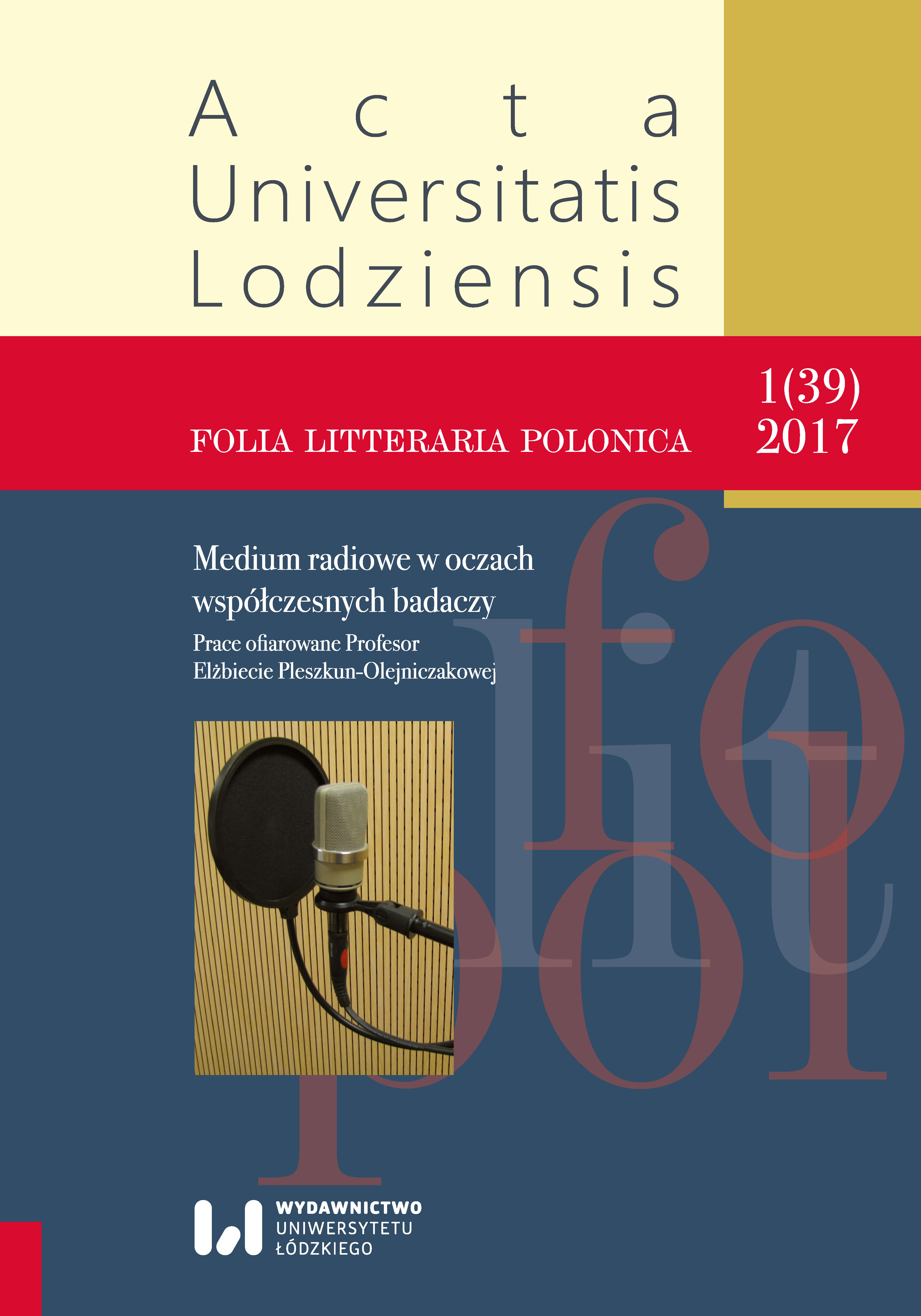Współczesne radio – pytanie o tożsamość
DOI:
https://doi.org/10.18778/1505-9057.39.05Słowa kluczowe:
radio, aurality, convergence, traditional radio, online radioAbstrakt
For over a decade now, we have been able to observe the increasing convergence of the media, thus leading to a unifying tendency in the forms of media message, a fusion of different styles and languages as well as of informational practices. The Internet plays more than a trifling role in this process, as thanks to its abilities both the untested and even the unknown are being equally explored. It seems that radio as an audio phenomenon of the 1930s is also undergoing this omnipresent tendency, losing its “original” [specifically its audio] identity. In the article, I raise the question of what chance radio has as a [traditional] audio medium in the context of ubiquitous stylistic multimedia unification.
Pobrania
Bibliografia
Hulewicz W., Teatr wyobraźni. Głosy dyskusyjne, Warszawa 1935.
Google Scholar
Konwergencja mediów masowych i jej skutki dla współczesnego dziennikarstwa, t. 1, red. Z. Oniszczuk, M. Wielopolska-Szymura; t. 2, red. M. Gierula, P. Szostok, Wydawnictwo Uniwersytetu Śląskiego, Katowice 2012.
Google Scholar
Pleszkun-Olejniczakowa E., Słuchowiska Polskiego Radia w okresie piętnastolecia 1925–1939, t. 1: Fakty, wnioski, przypuszczenia, Biblioteka, Łódź 2000.
Google Scholar
Radulski W., O klasycznej formie słuchowiska, „Pion” 1938, nr 13, s. 7.
Google Scholar
Terlecki T., Czy XII Muza?, „Pion” 1936, nr 42, s. 5.
Google Scholar
Tożsamość w wieku informacji. Media, Internet, kino, red. K. Doktorowicz, Wydawnictwo Uniwersytetu Śląskiego, Katowice 2015.
Google Scholar
Ulatowski J., Świat za drzwiami, „Tydzień Radiowy” 1927, nr 28, s. 9.
Google Scholar
Pobrania
Opublikowane
Jak cytować
Numer
Dział
Licencja

Utwór dostępny jest na licencji Creative Commons Uznanie autorstwa – Użycie niekomercyjne – Bez utworów zależnych 4.0 Międzynarodowe.











